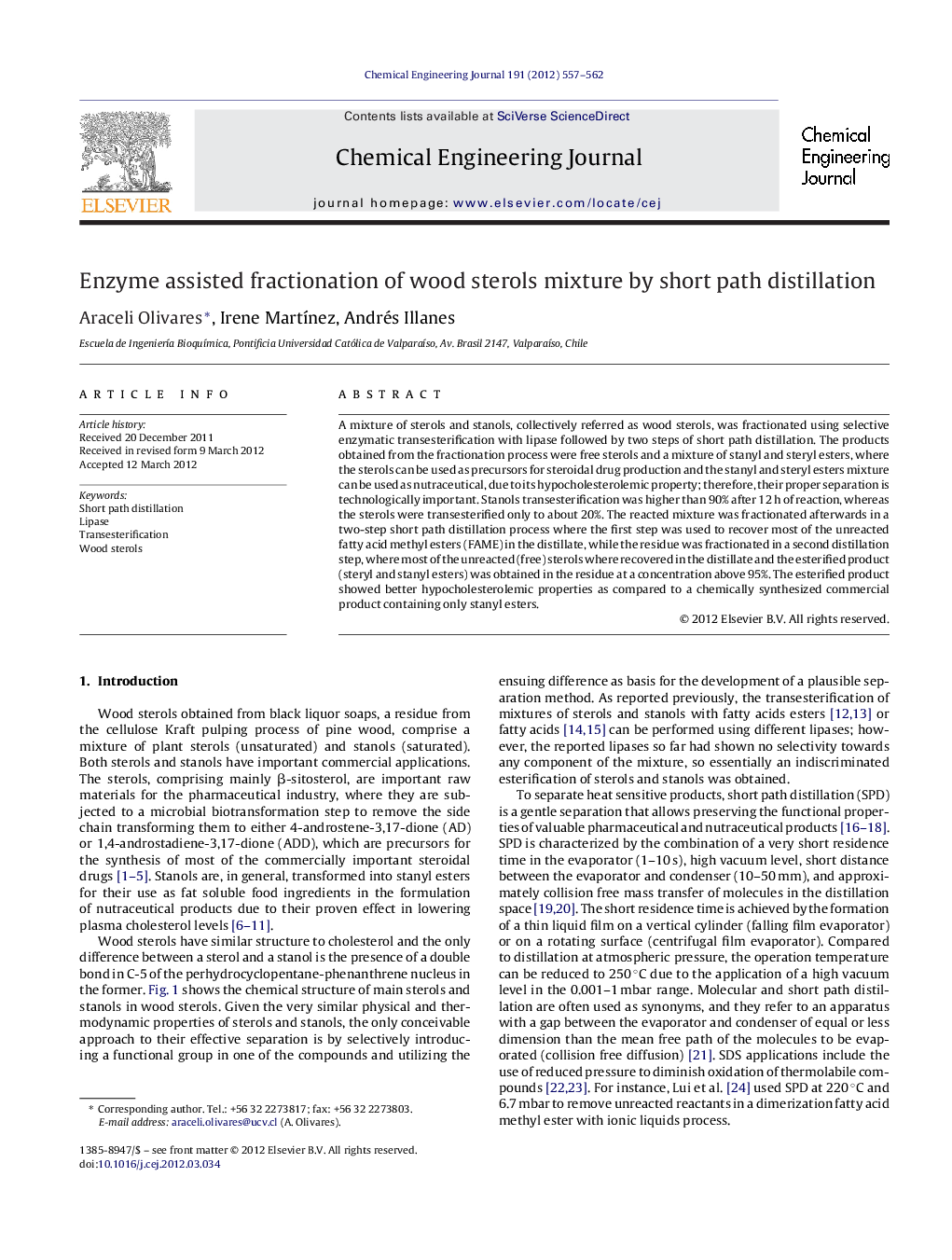| Article ID | Journal | Published Year | Pages | File Type |
|---|---|---|---|---|
| 149942 | Chemical Engineering Journal | 2012 | 6 Pages |
A mixture of sterols and stanols, collectively referred as wood sterols, was fractionated using selective enzymatic transesterification with lipase followed by two steps of short path distillation. The products obtained from the fractionation process were free sterols and a mixture of stanyl and steryl esters, where the sterols can be used as precursors for steroidal drug production and the stanyl and steryl esters mixture can be used as nutraceutical, due to its hypocholesterolemic property; therefore, their proper separation is technologically important. Stanols transesterification was higher than 90% after 12 h of reaction, whereas the sterols were transesterified only to about 20%. The reacted mixture was fractionated afterwards in a two-step short path distillation process where the first step was used to recover most of the unreacted fatty acid methyl esters (FAME) in the distillate, while the residue was fractionated in a second distillation step, where most of the unreacted (free) sterols where recovered in the distillate and the esterified product (steryl and stanyl esters) was obtained in the residue at a concentration above 95%. The esterified product showed better hypocholesterolemic properties as compared to a chemically synthesized commercial product containing only stanyl esters.
► We use lipase for the transesterification of wood sterols mixture. ► Two step short-path distillation are used for the separation of the reacted mixture. ► Steryl and stanyl esters mixture has good hypocholesterolemic property in rabbits.
